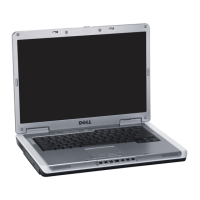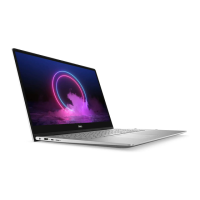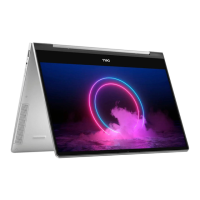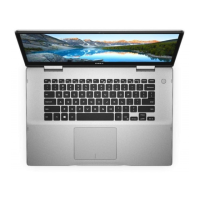* This key combination does not function under an operating system with the Advanced Configuration and Power Interface (ACPI), such as
Microsoft Windows 98.
Speaker Key Combinations
Use the key combinations in Table 6 to adjust the computer's speaker volume and to enable and disable the speakers.
Table 6. Speaker Key Combinations
* This key combination does not function under an operating system with ACPI, such as Windows 98.
System Function Key Combinations
Use the key combinations in Table 7 to boot the computer in MS-DOS mode and enter the system setup program.
Table 7. System Function Key Combinations
CD-ROM and DVD-ROM Drive Key Combinations
To eject the CD-ROM or DVD-ROM tray, press <Fn><e>.
PC Cards
On the right side of the computer is a PC Card slot in which you can install PC Cards that comply with Release 2.01 of the Personal Computer
Memory Card International Association (PCMCIA) standard and Release 4.2 of the Japanese Electronic Industry Development Association
(JEIDA) standard.
ThecomputersupportstypeIandtypeIIPCCards,suchasmodems,localareanetwork(LAN)cards,wirelessLANcards,andsmallcomputer
system interface (SCSI) cards. Also supported are such memory devices as static random-access memory (SRAM) cards that emulate
diskettes,random-access memory (RAM) cards, and one-time programmable (OTP) ROM cards, and advanced technology attachment (ATA)
cards that emulate integrated drive electronics (IDE) hard-disk drives.
If you are using the Microsoft Windows 98 operating system, you can use a zoomed video (ZV) PC Card, such as a hardware Moving Picture
Experts Group (MPEG) decoder. (The Microsoft Windows NT 4.0 operating system does not support ZV.)
NOTES: A PC Card is not a boot device.
The "type" of a card refers to its thickness, not its functionality.
Your computer recognizes most input/output (I/O) cards and automatically loads the device driver associated with that card.

